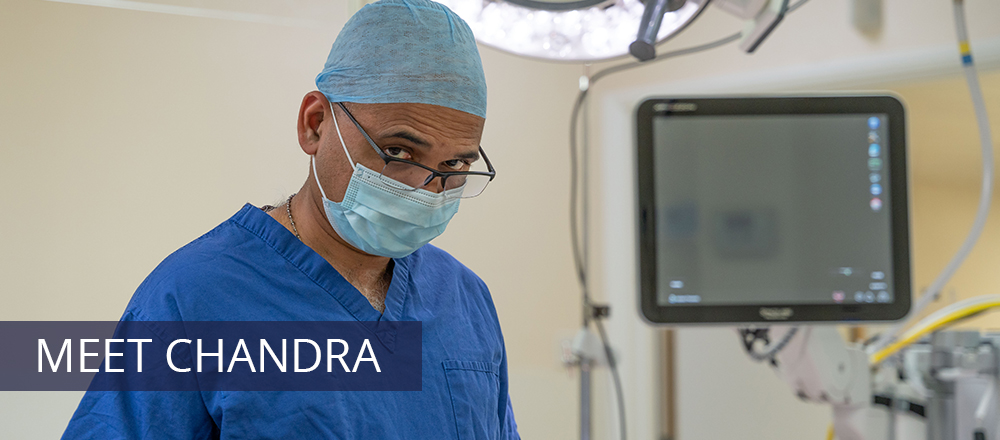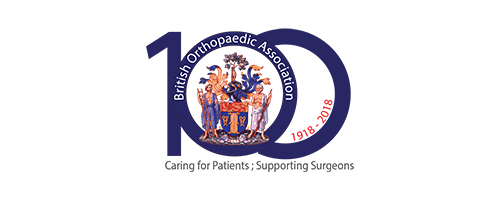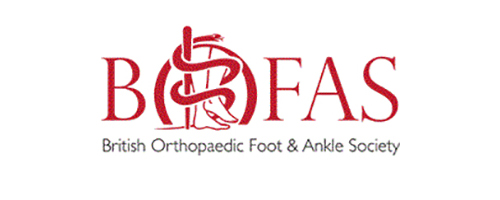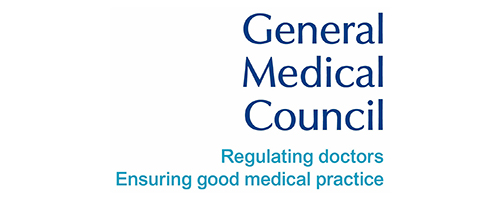The information outlined below on common foot conditions and treatments is provided as a guide only and it is not intended to be comprehensive. Discussion with Mr Chandra Rao is important to answer any questions that you may have.
For information about any additional conditions not featured within the site, please contact us for more information.
COMMON FOOT CONDITIONS
How does it get injured?
Most Achilles tendon problems occur in middle-aged athletes and are basically overuse injuries. In a few cases, other medical conditions contribute to the weakening of the tendon. A high-arched or low-arched foot may increase the stresses on the Achilles tendon.
As we get older the tendon becomes less flexible and less able to absorb the repeated stresses of running. Eventually small “degenerative” tears develop in the fibres of the tendon. The body tries to repair these tears. Sometimes the repair process is successful. However, the blood supply of the lower part of the tendon is not very strong and the combination of this and the continued stresses of running mean that the tendon may not completely heal. Instead, the tendon and its lining become painful and swollen, and the tendon may feel weak. The combination of degenerative and repair processes in the tendon is called tendonosis (or sometimes tendonitis). Because the lining of the tendon is called its tenosynovium, inflammation of the lining is called tenosynovitis.
Sometimes the tendon becomes weakened by the degenerative process to the extent that it tears completely.
How would I know if I had an Achilles tendon problem?
If you had a complete tear, you would probably feel a sudden pain in your heel or calf. Some people say this feels as though someone had kicked them on the calf, or hit them with a squash raquet. Usually the heel becomes painful, swollen and bruised, and it becomes difficult to walk.
Tendonosis and tenosynovitis develop more gradually. The Achilles tendon and the heel become painful and a swelling may develop in or around the tendon. At first the problem is present mainly on running or playing sport, but later it may become increasingly difficult to walk because of the painful tendon.
Can I treat it myself?
Achilles tendonosis or tenosynovitis can be treated like any other athletic injury or overuse problem in the first instance. You may need to reduce your mileage or the frequency of your sports for a while. When you do run or play, warm up longer and do plenty of Achilles stretches. A change to a softer running surface and well padded running shoes may help. A 1/4″ raise on your shoe will reduce the stresses on the tendon (remember to raise the other side too, to keep yourself balanced). When the pain and swelling is bad, it will usually be helped by applying an ice pack (a small bag of frozen peas or corn is ideal). For the pain, try simple pain-killers such as paracetamol. Anti-inflammatory medicines may reduce the inflammaton in the tendon, but check with your doctor or pharmacist before taking these as they can have side-effects in some people.
Obviously, there is no self-help solution to a complete tear of the Achilles tendon!
What can be done about it?
The first thing is to check that you have tried all the simple measures outlined above. If so, a physiotherapy programme aimed at reducing the inflammation in and around the tendon would be tried. Once the inflammation is improving, the physiotherapist will start exercises to strengthen and stretch the Achilles tendon.
If you have a foot shape that increases the stresses on your Achilles tendon, a moulded insole in your shoe may help.
Most people will improve a lot after physiotherapy. A few continue to have trouble and in this case an operation will be considered.
Will I need an operation?
As explained above, most people will improve with simple measures or physiotherapy. A small number continue to have major problems which interfere with their lifestyle. In this situation an operation may be considered.
If an operation is being considered your GP will arrange for you to see an orthopaedic foot and ankle surgeon. The surgeon will interview you and examine you again and may want you to have further treatment before making a decision about an operation.
The surgeon would probably want you to have a scan before any surgery, to show whether there is a problem in the tendon which can be corrected by surgery.
If there is tenosynovitis but the tendon itself is reasonably healthy, stripping out the inflamed tendon lining often gives good results. If the problem is tendonosis, surgery would involve removing the degenerate tendon and repairing the remaining tendon. If the degenerate area is localised this can give quite good results. However, often the degeneration involves quite a lot of the tendon and removing it all may leave quite a large gap in the tendon which may need a major operation to repair. A big repair usually needs tendon borrowed from somewhere else, either higher up the Achilles tendon or from another tendon. As you will appreciate, such a large operation may cause a lot of scarring and stiffness and the repaired Achilles tendon may not be very strong. Other possible problems with major Achilles tendon surgery include problems with the surgical wound (the blood supply to the heel area is not very strong and the wound may be very slow to heal: and stretching of the nerve at the back of the ankle (the sural nerve) causing numbness and tingling along the side of the foot. For these reasons surgery for Achilles tendonosis is only advised when the tendon problem is disabling.
The best treatment for a ruptured Achilles tendon is not known for certain. Most ruptures will heal if protected in a plaster for 6-8 weeks. After plaster treatment there is a higher risk of another rupture (about 15% as against 5% after surgical repair) and the tendon is often weaker than after surgical repair. Nevertheless many people get a good result after plaster treatment and, obviously, avoid the risks of surgery. This may be the best treatment for less physically active people. The greater strength and quicker recovery after tendon repair may be more useful to those who expect to play a lot of sport again. Your surgeon will discuss the options with you to help you decide what is best for you.
Will I have to give up running?
Usually not. You may need to reduce your distance for a while to allow your tendon to heal. Some people who have surgery will not get enough tendon strength or flexibility to allow them to return to running or sport.
In some people the plantar fascia becomes painful and inflamed. This usually happens where it is attached to the heel bone, although sometimes it happens in the mid-part of the foot. This condition is called plantar fascitis.
What are the causes?
Causes of plantar fascitis include:
- Usually it is due simply to constant stress, and is therefore commoner in people who spend all day on their feet or are overweight.
- Stiffness of the ankle or tightness of the Achilles tendon increase the stresses on the heel. Most people with plantar fascitis have a rather tight Achilles tendon.
- People who have high-arched (“cavus”) feet or flat feet are less able to absorb the stress of walking and are at risk of plantar fascitis
sometimes it starts after an injury to the heel. - People who have a rheumatic condition such as rheumatoid arthritis or ankylosing spondylitis may get inflammation anywhere a ligament is attached to bone (enthesopathy), and plantar fascitis in these people is part of their general condition.
Usually plantar fascitis eventually gets better itself, but this can take months or even years. If you have it once you are more likely to get it again.
Can I do anything about heel pain myself?
You can try to avoid the things that cause heel pain to start:
- avoid getting overweight
- where your job allows, minimise the shock to your feet from constant pounding on hard surfaces
- reduce the shocks on your heel by choosing footwear with some padding or shock-absorbing material in the heel
- if you have high-arched feet or flat feet a moulded insole in your shoe may reduce the stresses on your feet
- if you have an injury to your ankle or foot, make sure you exercise afterwards to get back as much movement as possible to reduce the stresses on your foot and your heel in particular
If you start to get heel pain, doing the above things may enable the natural healing process to get underway and the pain to improve.
What can be done about heel pain?
As heel pain is basically a stress problem in the tissues of the heel, the main treatment is to reduce stress.
Your doctor will advise you about weight loss and appropriate footwear.
A soft heel pad is useful to wear in your shoe to act as a shock-absorber when you walk.
If you have a stiff ankle or tight Achilles tendon a physiotherapist can advise on exercises for these. Stretching the Achilles tendon and plantar fascia is very effective general treatment for many patients.
If you have a high-arched or flat foot, a podiatrist may advise an insole to reduce stress.
Simple pain-killers such as paracetamol or anti-inflammatory medicines can help reduce the pain. Ask advice from your doctor or pharmacist before taking anti-inflammatory medicines as they can have troublesome side-effects in some people.
The simple measures above will help the majority of people with heel pain. If the pain continues, a splint to wear on your ankle at night to prevent your Achilles tendon tightening up while you are asleep is often very effective in improving the severe pain that many people get first thing in the morning and breaking the cycle of pain. Your GP or an orthopaedic foot and ankle surgeon or rheumatologist may inject some steroid into the attachment of the plantar fascia to damp down the inflammation. These measures will reduce the pain in most people who are not helped by simple treatment.
If you still have pain after one or two injections, your doctor may want to investigate your problem a bit further. If no other medical problem or cause of stress in your heel is found, a number of other treatments can be tried:
- further physiotherapy
- wearing a plaster cast to rest the inflamed tissues
- pain control treatments such as transcutaneous nerve stimulation (TENS) or acupuncture
Only if all non-surgical treatments fail would an operation be considered.
Do I need an operation?
It is rare to need an operation for heel pain. It would only be offered if all simpler treatments have failed and, in particular, you are a reasonable weight for your height and the stresses on your heel cannot be improved by modifying your activities or footwear.
The aim of an operation is to release part of the plantar fascia from the heel bone and reduce the tension in it. Many surgeons would also explore and free the small nerves on the inner side of your heel as these are sometimes trapped by bands of tight tissue. This sort of surgery can be done through a cut about 3cm long on the inner side of your heel. Recently there has been a lot of interest in doing the operation by keyhole surgery, but this has not yet been proven to be effective and safe. Most people who have an operation are better afterwards, but it can take months to get the benefit of the operation and the wound can take a while to heal fully. Tingling or numbness on the side of the heel may occur after operation.
Surgery for a bunion may be advised if simple measures, such as well-fitting shoes, simple painkillers and padding do not relieve the discomfort of the bunion. It is only appropriate if you are willing to be realistic about footwear after surgery, and understand and accept the potential problems of the procedure.
What does the operation involve?
A cut is made on the side of the bunion. The big toe joint is opened and the bony lump is removed. The first metatarsal is cut through, re-positioned and fixed with one or two screws. Sometimes a second cut is made between the first and second toes to free up the tight tissues on this side of the toe. The soft tissues on the other side of the joint are tightened to correct the deformity and the wound stitched up. The foot is dressed in soft bandages.
Can it be done as a day case operation?
If you are medically fit, have someone who can collect you and look after you after the operation, and you are comfortable afterwards, the operation can be done on a day case basis. However, if you have other medical problems such as diabetes, asthma or high blood pressure, you may have to be admitted the day before for tests and stay overnight after surgery. If you cannot be collected and looked after you must stay overnight to avoid complications. The commonest reason for having to stay overnight after bunion surgery is for pain control, as many of these operations involve breaking and re-positioning a bone. They may therefore be quite painful immediately afterward. Local anaesthetic injections can help with this, but not everyone is comfortable to go home.
What happens afterwards?
You can go home when comfortable and safe. An X-ray may be taken before you go home. For the first 2 weeks, you should avoid walking if possible and only put your weight through the heel. When not walking, rest with your foot elevated to reduce swelling.
You will be seen in the clinic 2 weeks after your operation. The dressings will be removed, the wound examined, the stitches removed if necessary, and an X-ray taken if it was not done in hospital. You will then have a splint put on your toe to hold it in position. You will then be more mobile and able to walk on your heel using crutches to support you. You will be able to remove the splint for bathing and showering.
Another clinic appointment will be made for 4 weeks later. At this time the splint will be removed, the toe examined and another X-ray taken. If this shows the osteotomy has fused, you can leave the splint off. If the osteotomy is not yet solid, you may need to continue using the splint for another 3-4 weeks. The process will then be repeated.
COMMON FOOT TREATMENTS
If the lump is pressing on your shoes, you will probably have tried different shoes before coming to see the surgeon, and there is usually no other option than surgery. However, if arthritis is the main problem, surgery would only be advised if other treatments, such as painkilling and anti-inflammatory medicines, modifications to your shoes and injections had not helped.
What does the operation involve?
A cut is made on the side of the big toe. The lump is removed and the joint flushed out. The joint is then checked to see how bad your arthritis is. The joint is then stitched up and dressings are applied.
Some people will have been advised before surgery that if the arthritis is worse than it appears on X-ray another operation will be done – your surgeon will discuss this with you before the operation.
Can it be done as a day case operation?
If you are medically fit, have someone who can collect you and look after you after the operation, and you are comfortable afterwards, the operation can be done on a day case basis.
However, if you have other medical problems such as diabetes, asthma or high blood pressure, you may have to be admitted the day before for tests and stay overnight after surgery. If you cannot be collected and looked after you must stay overnight to avoid complications.
The commonest reason for having to stay overnight after a cheilectomy is for pain control, as the operation involves cutting out a piece of bone. Local anaesthetic injections can help with this, but not everyone is comfortable to go home.
The majority of people who have a cheilectomy are able to go home the same day.
What happens afterwards?
You will come back to the clinic 2 weeks after surgery for a check on your wound, removal of sutures and to advice you on exercises. You should then start to stretch your big toe up and down gently. This may hurt a bit, but it is important to get your toe moving early so it does not stiffen up. Obviously, we do not expect you to do this very vigorously at first, but as the toe heals you should work harder and harder at it.
Usually you will be seen again about 6-8 weeks after your operation and if you are making good progress then you need not come back.
If the operation was done for the bony lump alone, it will almost never grow back.
If the operation was done for arthritis, you will probably notice an improvement in the arthritic pain within a month.
Fusion of the great toe is an operation to stiffen the joint at the base of the great toe (first metatarsophalangeal joint), removing bony bumps and correcting any deformity.
Why would it be done?
The commonest reason for fusing the great toe is arthritis of the big toe joint. This may be isolated arthritis of the big toe (“hallux rigidus”) or part of a generalised arthritis of the foot (usually rheumatoid arthritis). It would only be done if the arthritis has severely damaged the joint. If hallux rigidus is at an early stage, another operation, called a cheilectomy, is usually advised.
The toe may also be fused to correct a severe deformity of the toe, usually a bunion (“hallux valgus”). This may seem a very aggressive way to treat a deformity, but severe deformities tend to recur if any lesser form of treatment is used, and a fusion will virtually guarantee this will not happen.
Finally, a fusion may be used to treat problems after failure of another operation on the big toe, especially if the toe is deformed, weak, floppy or painful. If the toe has been left very short by the previous operation, a piece of bone may be inserted into the fusion to lengthen the toe.
A fusion makes your big toe quite stiff. In particular, it will limit the height of heel you can wear on your shoes, usually a maximum of 1 inch heel. In addition, the stiff joint may alter the way you walk. Most people do not find this much of a problem (in fact, if you have severe arthritis, getting rid of the pain by a fusion will usually make walking so much more comfortable that the stiffness is a small price to pay). Nevertheless, a few people have to use an insole in their shoes or have alterations to their shoes. If you cannot accept these limitations, you should not have a fusion.
What does the operation involve?
A cut is made along the side of the toe and the joint is opened. Any large bony lumps are trimmed. The joint surfaces are cut out, trimmed to enable the toe to sit in the right position, and fixed together with two screws or a small plate. The wound is stitched up and a soft, bulky dressing applied.
If you are having a piece of bone put in for a short floppy toe after previous failed surgery, the bone will be removed from the brim of your pelvis just above the hip. It will be fixed into place using a small plate as well as screws.
What happens afterwards?
You can go home when comfortable and safe. An X-ray may be taken before you go home. For the first 2 weeks, you should avoid walking if possible and only put your weight through the heel. When not walking, rest with your foot elevated to reduce swelling.
You will be seen in the clinic 2 weeks after your operation. The dressings will be removed, the wound examined, the stitches removed if necessary, and an X-ray taken if it was not done in hospital. You will then have a splint put on your toe to hold it in position. You will then be more mobile and able to walk on your heel using crutches to support you. We still recommend, however that when not active you elevate your foot to help reduce the swelling. You will be able to remove the splint for bathing and showering.
Another clinic appointment will be made for 4 weeks later. At this time the splint will be removed, the toe examined and another X-ray taken. If this shows the toe is fused, you can leave the splint off. If the fusion is not yet solid, you may need to continue using the splint for another 3-4 weeks. The process will then be repeated.
Arthritis of big toe can be very painful condition making difficult to walk and wear shoes. While fusion is an option, replacement of the joint preserves movements while giving effective pain relief.
There are a variety of operations to correct severe deformities of the small toes, usually “hammer” or “claw” toes. These include:
Modified “Stainsby” procedure
Toe fusion
Tendon transfer
Ingrowing Toe Nail
Plantar Plate Repair
Why would they be done?
If the deformity is painful, causes the toe to rub in the shoe or causes pressure in the ball of the foot, and cannot be accommodated in a shoe, surgery would be considered. Some people prefer to have shoes with extra depth and possibly an insole provided. Others do not like such shoes, or are not comfortable in them. The choice of operation depends on the type and severity of the deformity.
A “Stainsby” procedure will be performed if the toe is fixed in position and it causes pain on the ball of the foot as well as pain on the top of the toe.
A fusion is usually performed if the toe is deformed at the last joint causing pain at the end of the toe but the rest of the toe is pain free.
A tendon transfer will be performed if the toe is completely mobile and the deformity can be corrected. This will usually only be performed in younger patients.
What does each operation involve?
Modified Stainsby procedure
A cut is made at the base of the toe and looks like a “〈”. The joint at the base of the toe is freed up, some bone is removed from this joint and the tight ligaments are freed to allow the joint to be corrected. The top and bottom tendons are stitched together and the toe is then stabilised with a pin driven into the tip just below the nail. The cut is stitched up and dressings applied. There is no need for a plaster.
Fusion
A cut is made across the joint at the end of the toe and a small piece of bone is removed from each bone. The toe is then stabilised with a pin driven into the tip just below the nail.
Tendon transfer
A cut is made across the joint at the end of the toe and a small piece of bone is removed from each bone. The toe is then stabilised with a pin driven into the tip just below the nail.
What happens afterwards?
The dressings on your foot will be removed two weeks after surgery. If a pin has been put in the toe, this will stay in for another 4 weeks. For the other operations, the paper stitches will be replaced and need to be kept on for another 4 weeks. Keep the pin and wounds dry until any scabs have healed and fallen off.
After the pin or paper stitches have been removed, you will be taught how to massage the wound and the toe, and how to tape the toe to prevent it tightening up again. Once the pinhole is dry and the scab has fallen off, you can get the toe wet.
Usually you will be seen again about 3 months later to check all is well. After that, you can arrange to come back if you are having any problems.
This operation is to remove an inflamed and/or swollen nerve in the ball of your foot trapped between 2 bones.
A Morton`s neuroma causes pain in the ball of your foot and possibly your toes. It can sometimes be treated with simple measures such as comfortable shoes, weight loss, insoles and simple pain tablets. If these measures do not work, an injection of local anaesthetic and corticosteroid will be tried and if this is not sufficient to control your symptoms, the trapped nerve can be surgically removed. Occasionally people have morton`s neuromas in both feet.
What does the operation involve?
A cut is made on top of the foot between the metatarsal bones. The nerve is identified and a short section is removed. The skin is then stitched up and the foot dressed with a firm bandage.
What happens afterwards?
You can go home when comfortable and safe. For the first 2 weeks, you should avoid walking if possible and only put your weight through the heel. When not walking, rest with your foot elevated to reduce swelling.
You will be seen in the clinic 2 weeks after your operation. The dressings will be removed, the wound examined and the stitches removed. You will then be more mobile and able to walk on your whole foot using crutches to support you. Another clinic appointment will be made for 4 weeks later.
Arthritis in the middle of the foot can best treated by injections on the short term and fusion surgery over long term.
The information outlined above is provided as a guide only and it is not intended to be comprehensive. Discussion with Mr Chandra Rao is important to answer any questions that you may have.
QUICK ENQUIRY
CONTACT INFORMATION
Private Secretary: Jo Evans
joanne.evans66@nhs.net
NHS Secretary: Jo Brindle
jo.brindle@wvt.nhs.uk







